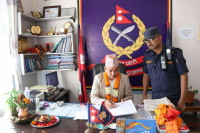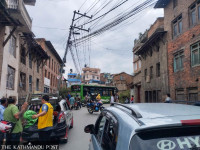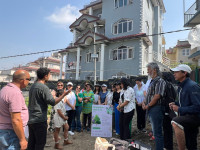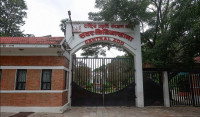Lalitpur
Lalitpur launches drive to revive ancient spouts
The city plans to rely on existing Raj Kulo and rainwater harvesting to feed the dying water spouts.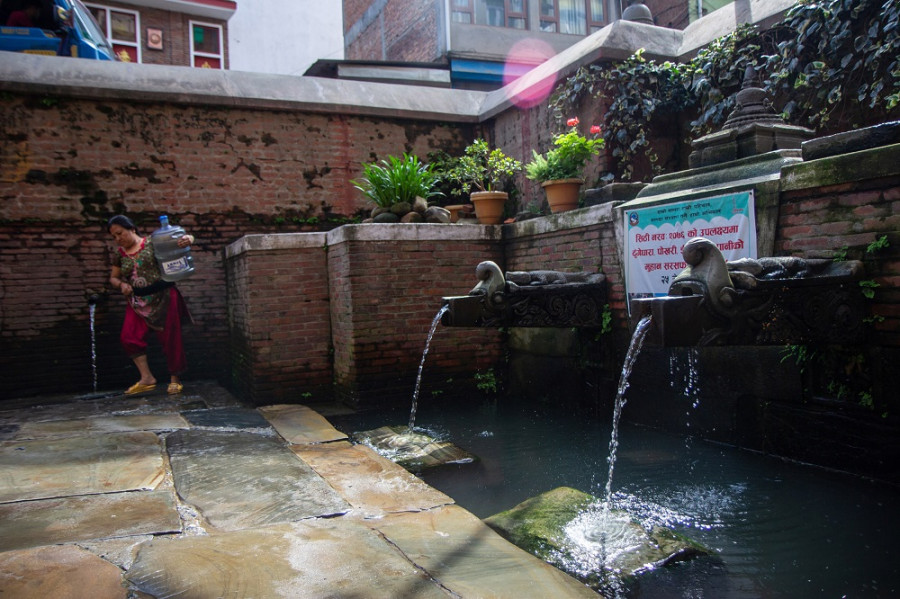
Anup Ojha
The Lalitpur Metropolitan City has launched a campaign to revive the centuries-old water spouts, many of which have gone dry over the years due to the lack of preservation efforts.
Mayor Chiri Babu Maharjan launched the campaign on Friday by inaugurating a rainwater recharge station in Sinchahiti, which is situated to the east of Patan Industrial Area. The recharge station fed by rainwater will be used to revive Sundhara (golden tap) which has gone dry for years now.
[ Read: Kathmandu Valley’s stone spouts were once gushing with water. Now they’re slowly disappearing.]
“This is the starting point of my dream project,” said Maharjan, who grew up drinking the water from these ancient spouts. “This year, we are going to revive three water spouts,” said Maharjan.
In the second phase of the campaign, the city plans to revive eight water spouts situated in the core city areas as well as continue the restoration work of the ancient water spouts that are part of Lalitpur’s heritage.
Maharjan said the campaign, which was supposed to be launched three months ago,had got delayed because of the coronavirus lockdown.
This year, the city is going to revive the historic Sundhara in Ward 16 and two other water spouts in Sinchahiti and Sukumahiti in Ward 17.
The city has allocated a budget of Rs 8 million for these projects.
Prayag Raj Joshi, secretary of Environment and Heritage Conservation Nepal, Lalitpur has 47 water spouts and over 80 percent of them are completely dry.
“There are barely half a dozen water spouts in Lalitpur that run throughout the year,” said Joshi, who is also part of the campaign.
“I am one hundred percent sure, all these spouts can be revived. So I am volunteering in this project, because Mayor Maharjan has been working hard to restore this city’s heritage.”
The city has formed an 11-member consumer committee to conduct a research for the revival of the ancient water spouts through water recharge centers by connecting them with Raj Kulos or royal canal.
“If all these water spouts are revived, they could fulfil the water needs of 40 percent of the city population,” said Joshi.
The city has already initiated work to revive Raj Kulo from Tika Bhairav to Sunakothi and link the canal up to Lagankhel, according to Raju Man Maharjan, spokesperson of Lalitpur Metropolitan City.
“The Raj Kulo is already there, but we need to drill the ring road, that won’t be a problem, the city has already taken permission from the Department of Roads,” said Maharjan.
Joshi said the plan is to channel the water from Sunakothi using Raj Kulo as a conduit and set up the collection point in Saptapatal Pokhari in Lagankhel.
“The Supreme Court has already ruled that Saptapatal Pokhari is a public land. So it is under the city’s jurisdiction,” said Mayor Maharjan. “We are going to widen this pond and harvest rainwater to feed our dying spouts.”




 10.12°C Kathmandu
10.12°C Kathmandu.jpg)
